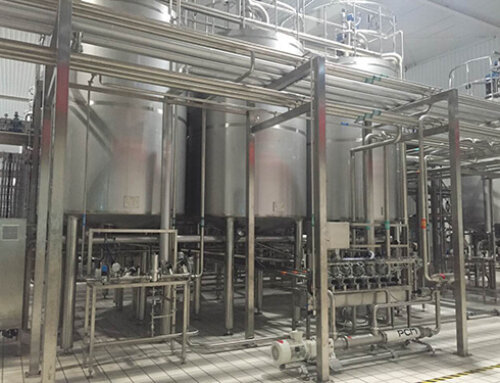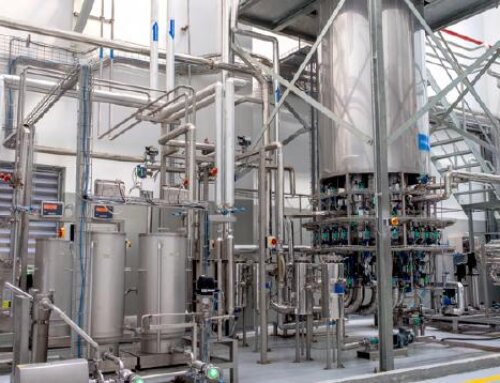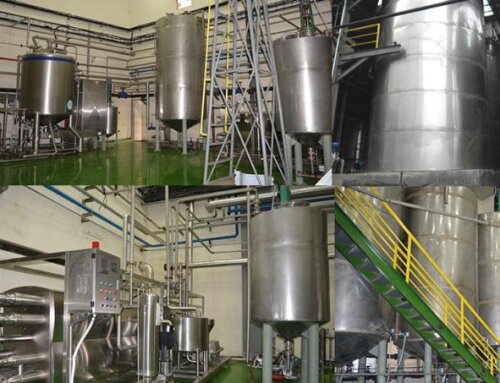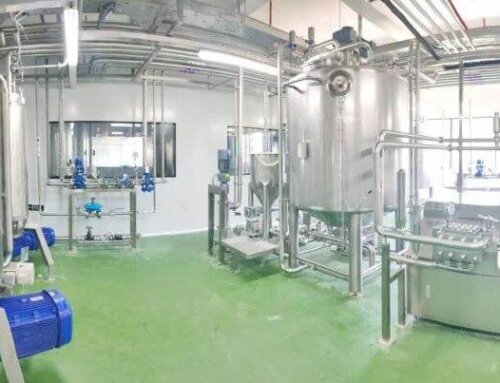Fruit Jam Processing Plant Description
- The fruit jam can also be called fruit preserves, it is a product made by boiling the pulp with enough sugar to make it a moderate consistency and firm enough to hold the fruit tissue in place.
- Most of the fruits are suitable for processing into the fruit jam, such as mangoes, plums, apricot, peach, apples, guava, berry fruits(strawberries, cherries and blueberries raspberry, youngberry), pineapples, grapes, oranges. The fruit Jam can be made from one fruit or a combination of two or more fruits. It is best to use some unripe fruit because slightly immature fruits contain more acid and pectin than overripe fruits.
- The main ingredients in fruit jam are fruit pulp, sugar, acid and pectin. the high acidity (pH around 3.0) and high sugar content (68-72%) prevent mold from growing in jam and keep the fruit jam having a long shelf life.
- The general technological flowchart of the fruit jam processing line is fruit pretreatment(washing, sorting, blanching, peeling, pitting, crushing), fruit pulping, fruit pulp, sugar, acid and pectin mixing process, fruit jam vacuum concentration process, fruit jam filling and cooling process.
- The vacuum concentrator kettle is applied to evaporate the water from fruit pulp for small-scale and batch production, the forced circulation evaporator will be used for large-capacity (evaporating capacity of more than 1 ton per hour) fruit jam processing. When concentrating, water must be quickly boiled to concentrate the mixture before it darkens.
- The capacity of the fruit jam processing plant is from 2 tons per day to 500 tons per day, and the end products of fruit jam are usually filled into glass jars, metal cans, pouches, soft bags, and other containers that have great sealing performance.
- The fruit jam processing machines are made of SUS304 materials, and they can meet the food industry’s hygiene conditions.
- The raw material for fruit jam processing can be fresh fruits or frozen fruits.
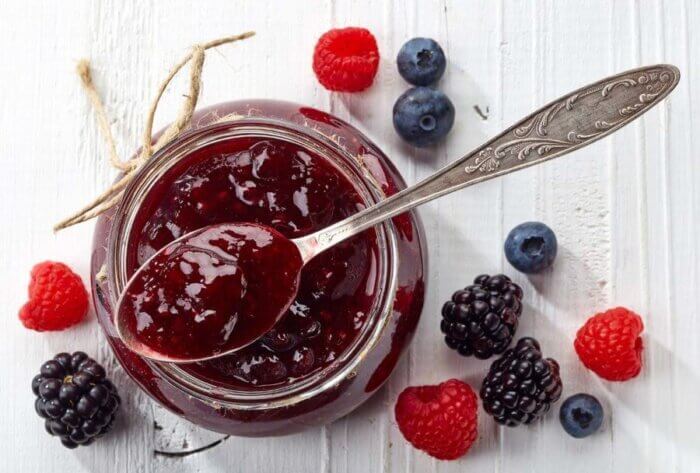
Fruit Jam Processing Ingredients
The four necessary ingredients in manufacturing jams include fruit, pectin, sugar, and acid, optional ingredients include spice, buffering agents, preservatives, and antifoaming agents.
Fruit pulp: Fruit pulp is the main ingredient in fruit jam, use fresh unripe fruits as raw material, then use the beating machine to make the fruit into fruit pulp.
Pectin: Pectin is needed to make the fruit set into a gel. There are pectin in all kinds of fruits, but the contain level is different, citrus, apple, passion fruits have higher level, whereas berry fruits have a lower level. In order to make standardized gel in fruit jam, we would better buy pectin powder or pectin solution as ingredients to add to the mixing tanks.
Sugar: Sugar has two main functions in fruit jam processing plant: increase jam flavor and prevent microbial spoilage. The sugar concentration is between 68%-72% is the best. The premium quality refined sugar will be dissolved in water to make into syrup, then through double filter separation and pumped into the mixing tank.
Acid: The fruit jam needs to have a high-level acidity(PH-3.0-3.3) to enable the pectin form the gel. High acid fruit pulp like citrus, apple do not need, but when we make banana, papaya, berry fruits jam, we need to add citric acid, malic acid or tartaric acids to adjust the fruit jam PH to 3.

Fruit Jam Processing Plant Main Machine and Process Introduction
Fruit pretreatment system and pulp extraction machine
Fruit should be as fresh as possible and slightly under-ripe with good color and flavor, then the fruit should be washed in clean water, peeled and the stones removed. The edible portion of the fruit is separated and pulped (or) juice is extracted through a fruit crushing machine and fruit pulping machine.

Ingredients blending system
All of the ingredients were blended together at the first stage of the process; however, with modern demands for high consistency of quality, it has been common to add some critical ingredients after evaporation. Thus, for example, citric acid may be added at a late stage to give precise pH control. Volatile flavoring may also be added after the evaporation stage to avoid evaporative loss.
Mixing together of ingredients such as fruit pulp, sugar, pectin, and possibly corn syrup (liquid glucose). The various ingredients may be weighed or metered into the batch premix tanks. Two vessels are provided so that one may be used for the recipe preparation while the other is feeding the process.
When mixing, as the pectin is a high viscosity and is difficult to dissolve, the colloid mill or high-shear mixer/pump is suggested to dissolve such materials.
Some manufacturers may also add fruit dice into fruit jam, with this condition, the fruit dice must be cooked or sterilized, then add into the blending tank to mix with other ingredients evenly, and after the fruit dice are added into the blending tank, they will need gentle mixing and no high shear mixing. For the fruit dice mixing, the horizontal mixing tank with paddle and scraped surface combined agitator is suggested to use to avoid the fruit dice sinking to the bottom.

Fruit jam vacuum evaporator
The vacuum evaporator is used for removing water in fruit jam to get the desired total solids level. There are two types of evaporators:
Forced circulation evaporator: The jam is fed into the vacuum heating chamber by pump, and further heated by steam passing through tubes ensures that very rapid evaporation takes place, minimizing loss of fruit volatiles and giving a product with good natural fruit color. Typically, the temperature of evaporation is 60 to 65℃. This type of evaporator is high efficient and precise in control of product PH value, Brix, heating temperature, etc. So it is suitable for middle and large-scale fruit jam processing plants with continuous production.
Vacuum cooking pot: After mixing, the premix is drawn under vacuum into the vacuum cooking vessel. The vacuum cooking pot is the jacketed vessel that can be use steam to heat to ensure efficient heat transfer using the low-speed scraper agitator without problems of burn-on even in preparing part batches. Rapid vacuum evaporation takes place at 60 to 65℃, and the vapor is separated in a cyclone separator with any product carryover being returned to the vessel.

Fruit jam pasteurization machine
After evaporation to the desired level of solids, the product is transferred to the scraped-surface heat exchanger or tube-in-tube heat exchanger by pump to kill any spoilage microorganisms present in the ingredients. The rapid pasteurization usually takes place at 85 to 95℃.
The fruit jam pasteurization can also be done after filling in containers with spray tunnel pasteurizer or water bath pasteurizer, the pasteurization temperature is about 95℃ for 15-20 minutes, after pasteurization, the fruit jam in containers will be cooled down to room temperature for packing.

Fruit jam filling machine
Cans or jars should be cleaned and disinfected in advance, then filled the jam into the containers at 82-85°C. If the filling temperature it higher, condensation will form under the lid dilute the jam, allowing mold to grow, and even colder than this, the jam will be difficult to pour out. The container should be filled to about 9/10 of its volume to help create a vacuum in the space above the product as it cools and to keep the can upright during cooling until gel forms.
Fruit Jam Processing Plant Technological Flowchart

